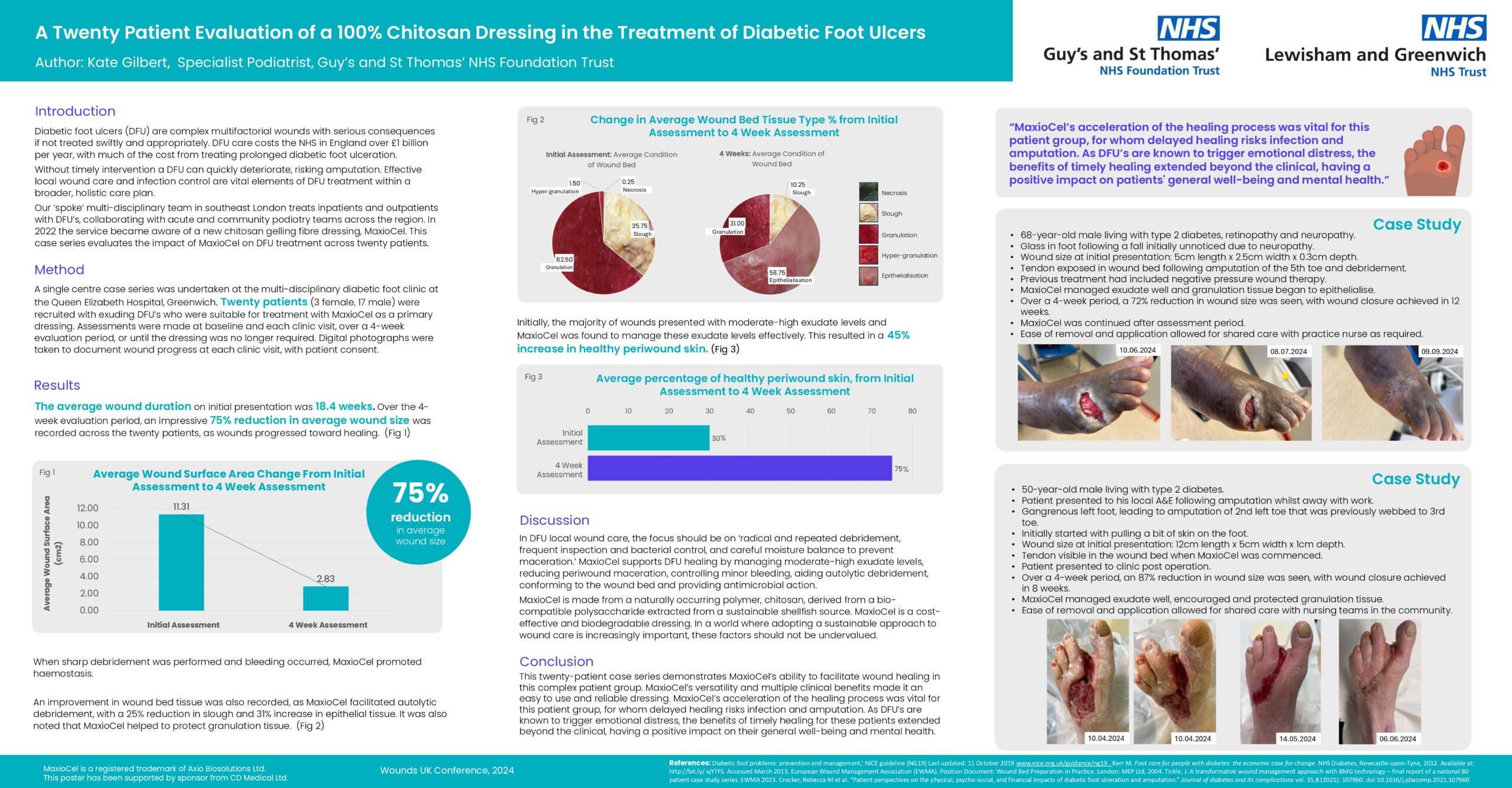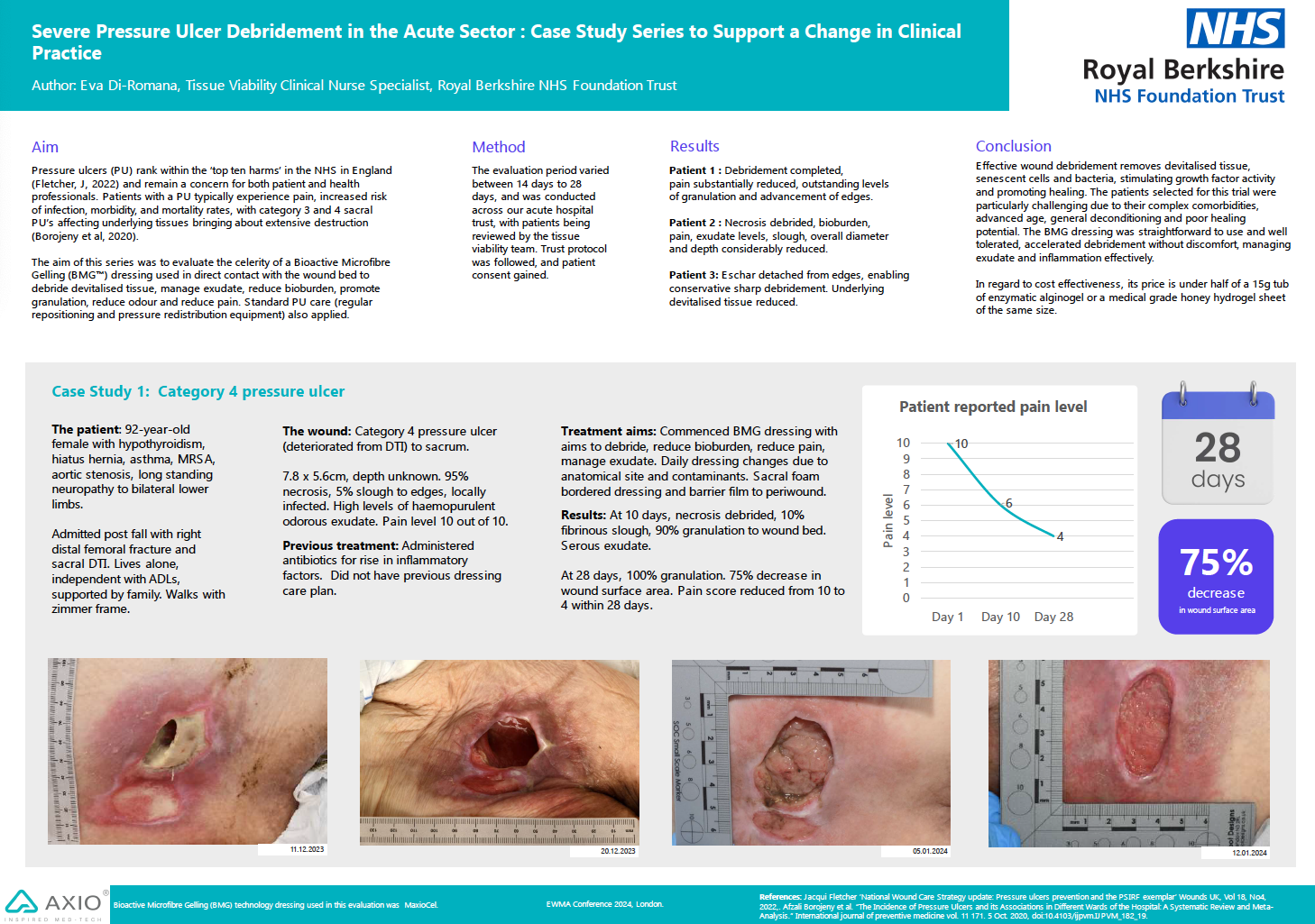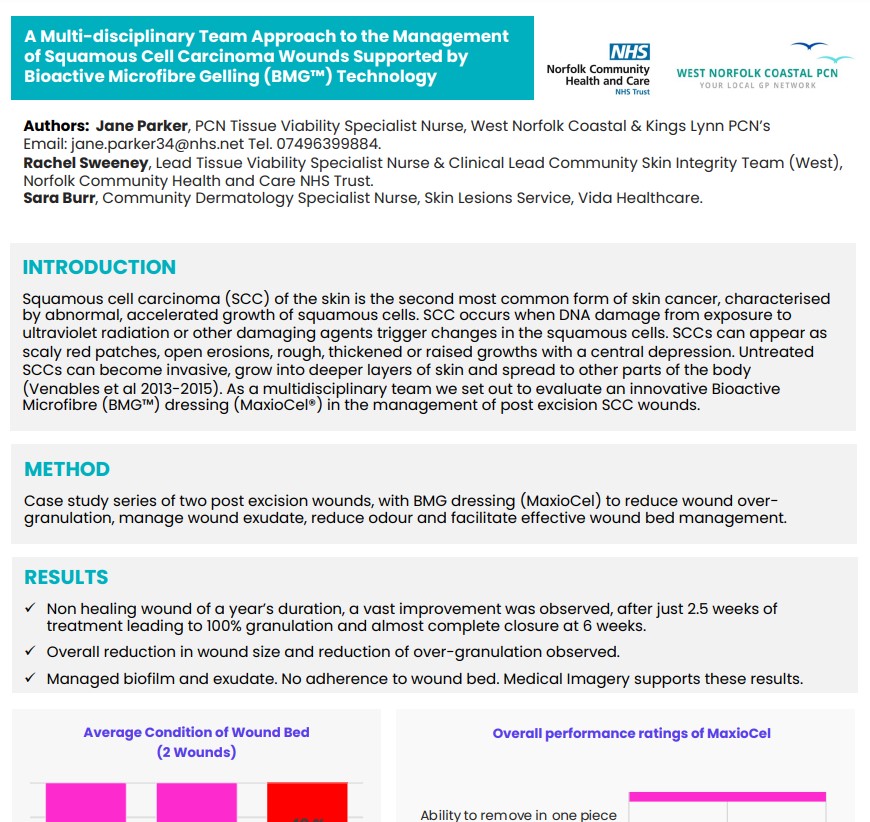Venous Leg Ulcer Treatment in a New Lower Limb Clinic: A Seven-Patient Case Series
Publication Details:
Roberts, J. (2025) Venous leg ulcer treatment in a new lower limb clinic: A case series utilising a chitosan gelling fibre dressing. SoTV Conference Proceedings, Society of Tissue Viability, 2025.
Wound Details
Seven patients presenting with static venous leg ulcers (mean duration 34 weeks) at newly established lower limb clinics.
Key Findings and Data:
Outcome Measure | Baseline | After Evaluation Period |
Mean Wound Size Reduction | 0% | 82% reduction overall; notable from Day 7 |
Slough Percentage | 43% | 9% |
Granulation Tissue | 0–20% | 63% average |
Epithelial Tissue | 0% | 29% |
Peri-wound Skin Condition | Variable | Healthy in all patients |
Clinician Ease of Use | N/A | Easy application and atraumatic removal, |
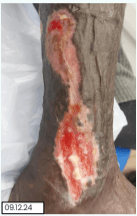


Case Spotlight—Grace (63 yrs):
- Baseline: 8.5 × 3.5 cm Venous leg ulcer, 20% slough, 80% granulation, moderate haemopurulent exudate, high bioburden, pain 6/10, 10-year history.
- Results:
- Pain reduced from 6 to 3 within 2 weeks.
- 97% wound size reduction and 100% granulation by 4 weeks.
- Returned to work, describing herself as “overwhelmed with happiness.”
Effect on Wound Bed and Management:
- Autolytic Debridement: Significant slough reduction facilitated by chitosan’s gelling action.
- Exudate & Bioburden Control: Marked decline in exudate levels and bioburden, promoting a healthier wound environment.
Clinician and Patient Feedback:
- Clinicians: Found the dressing intuitive, with atraumatic removal and zero adverse events.
- Patients: Reported psychosocial benefits—some returned to work and experienced restored quality of life
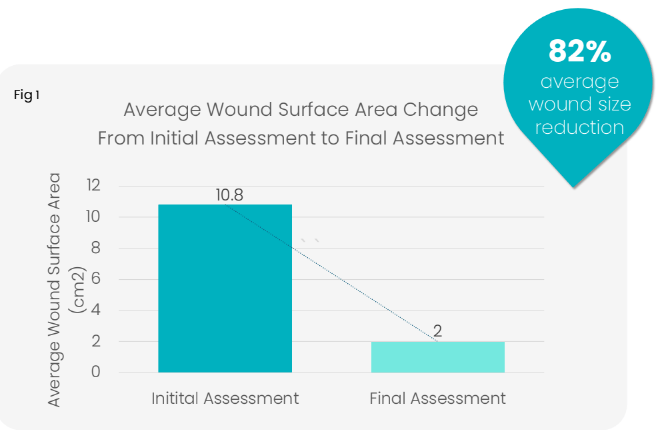
Key Insights:
- Chitosan BMG™ dressings deliver rapid wound contraction, effective debridement, and robust granulation in chronic VLUs.
- Their simplicity makes them accessible for primary-care clinicians, while psychosocial gains underscore the broader impact on patient wellbeing.
 A collaborative study with Harvard Medical School
A collaborative study with Harvard Medical School
